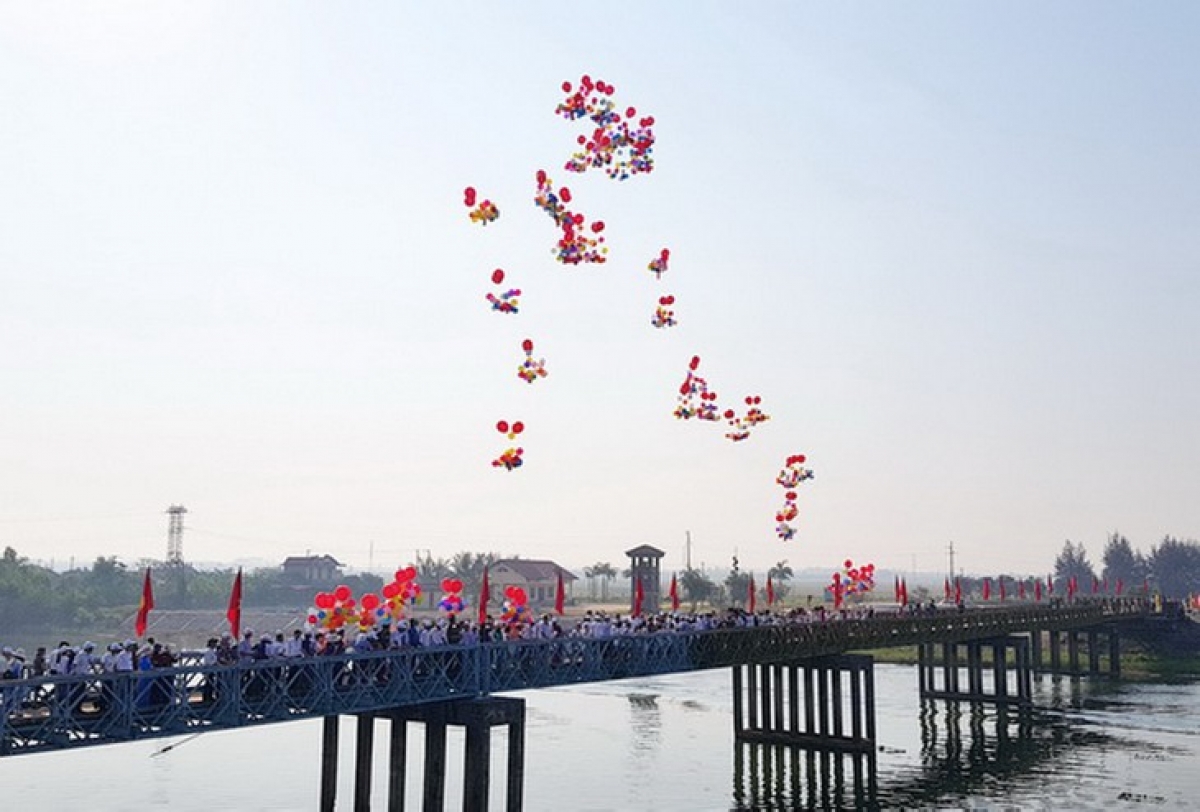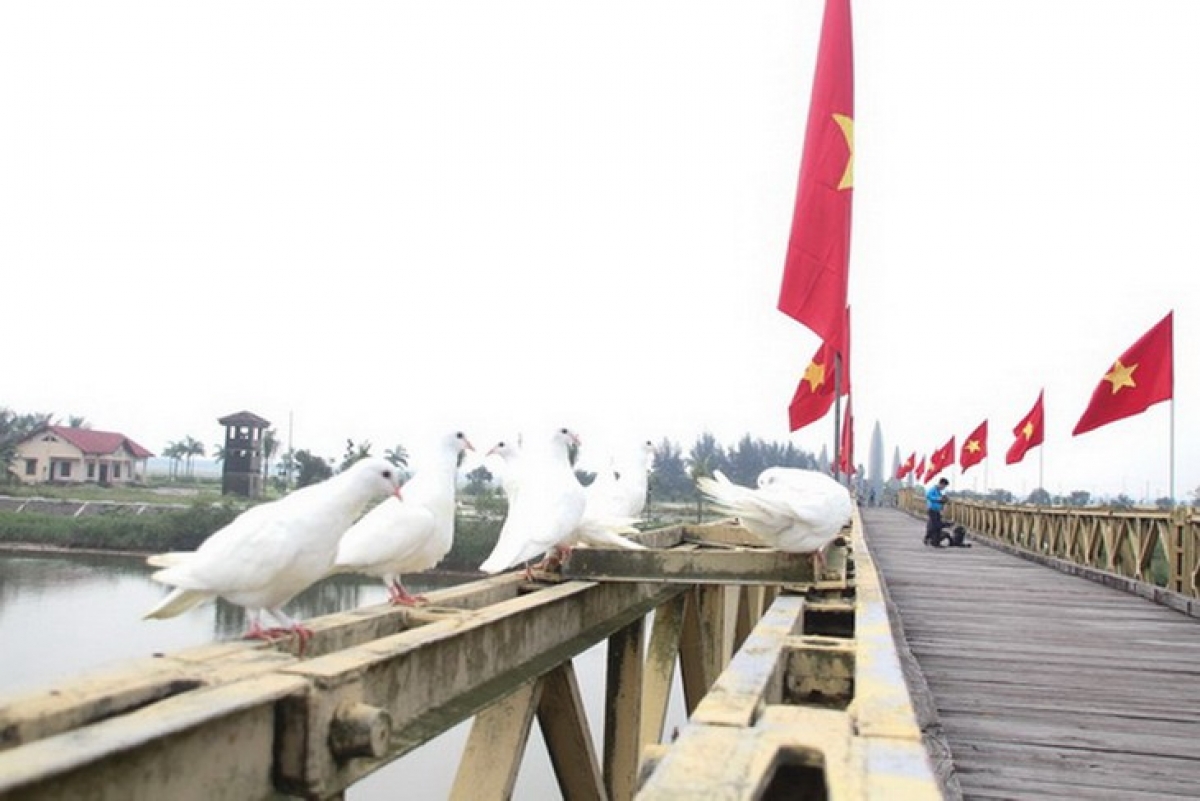Quang Tri province suffered heavy bombardment and loss of life during the war in Vietnam. Local people are now working to transform Quang Tri from a war-torn area into an icon of peace.

Balloons are released from Hien Luong bridge carrying people's wish for peace. (Photo: VOV)
At the mention of Quang Tri province, the first thing that pops into the mind of almost any Vietnamese person the fierce battles fought there: at Hien Luong Bridge across the Ben Hai River, which divided Vietnam into north and south in 1954, at the Vinh Moc tunnels, and Road No9, and many other places. The Quang Tri Ancient Citadel is particularly iconic in Viet Nam's glorious history.
In a defense that lasted 81 days and nights in 1972, this three-square-kilometer area incurred fierce bombardment, a destructive power equivalent to seven of the atomic bombs the US dropped on Japan in 1945.
93-year-old Nguyen Kham of Quang Tri township witnessed the bombing. Debris was strewn everywhere. Today the lush green town is busy and vital.
Kham said, “Peace is the ultimate happiness of all Vietnamese people. Our fight for peace was praised, encouraged, and supported by people all over the world. We here in this small Quang Tri town are determined to rebuild. I believe we can make Quang Tri famous as a land of peace.”
The headquarters of the Provisional Revolutionary Government of the Republic of South Vietnam was located in Quang Tri province. There, the leaders received Cuban President Fidel Castro and 43 ambassadors from all over the world who came to present their credentials.
Hoang Phuoc Lam, chief manager of the headquarters relic, said, “The Provisional Revolutionary Government of the Republic of South Vietnam promoted the spirit of great national unity. It connected fronts, organizations, and forces inside Vietnam with peace lovers around the world who opposed the war in Vietnam. This combined power enabled us to achieve our national reunification.”
Since 2000, a festival has been held annually at a special national relic complex on the Ben Hai river on Reunification Day (April 30) to promote peace, honor those who sacrificed their lives for national independence, and commemorate war victims. A flag-hoisting ceremony is always part of the festival, which was recognized as a national festival in 2010.

Pigeons perch at Hien Luong bridge. (Photo: VOV)
The festival includes a ritual of receiving water taken from Lenin spring at the Viet Bac military base in northern Vietnam and water taken from the downstream of the Hau river where the nine major rivers of the Mekong Delta meet.
In 2011, 21 rocks taken from islands of the Truong Sa archipelago and square-fruit almond trees, symbols of Vietnam’s maritime sovereignty, were displayed at the Reunification Festival. In 2019, balloons were released from the historic Hien Luong bridge carrying a wish for world peace.
Quang Tri authorities are planning to hold another festival, dedicated to peace, which will debut in 2022.
Nguyen Dang Quang, Deputy Secretary of the Quang Tri provincial Party Committee, said the festival testifies to Vietnamese people’s desire for peace and calls for foreign efforts to relieve the pain of war and preserve peace.
“The ‘For Peace’ festival has been approved by the Prime Minister. Quang Tri province, which suffered heavily during the war, wants to host this festival to deliver our message of peace for all,” according to Quang.